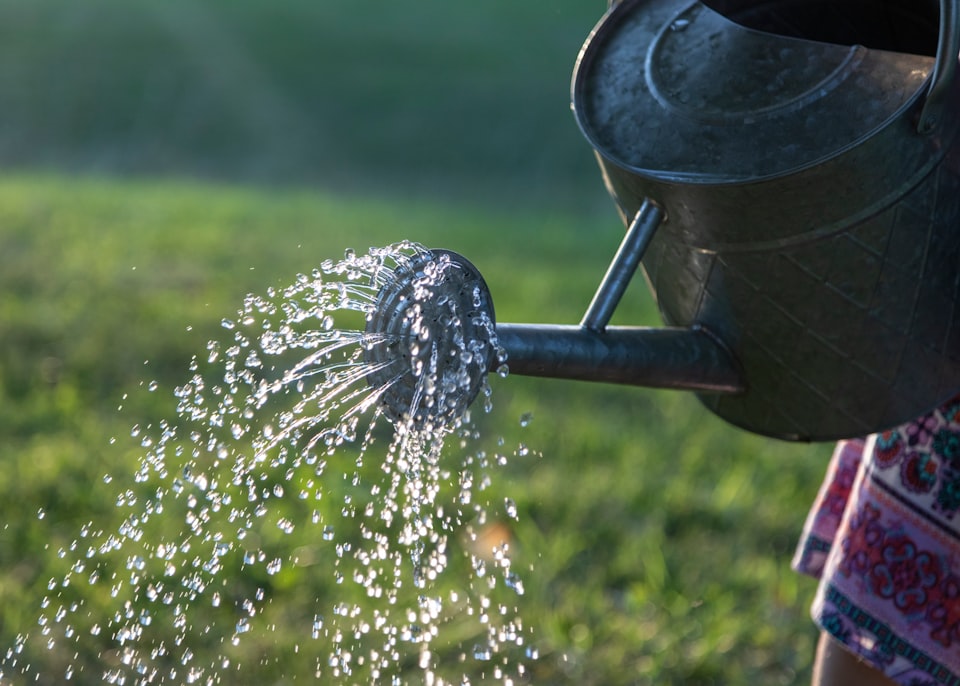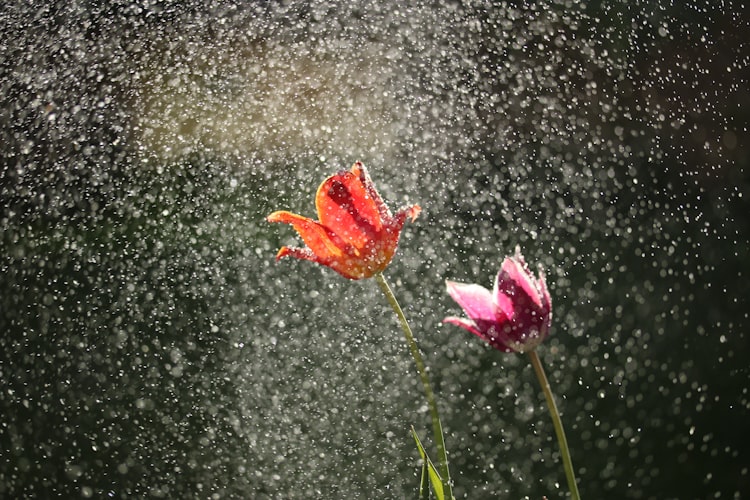Irrigation For Drought Tolerant Gardens

If you live in a drought-prone area and are planning a drought-tolerant garden you will need to water your plants to stand a good chance of them getting established. Once drought-tolerant plants are established they can go for months without any water, but only if they were established correctly. If they are not established properly, they will not be as hardy during dry spells, and in many cases, they will not thrive and can expire much sooner than if they were established correctly.
Drought-tolerant plants need a strong root system that allows them to tap deep into the ground to access subsurface moisture when the surface is dry. The following illustration shows the difference in Native vs non-native plants in the North American Prairies. As you can see, there is a big difference in the size of the roots on the native plants that are adapted to dry conditions.

These prairie plants grow a root system like this because they must do so to survive the hot summers. If they fail to do this, they will not survive year-round. The non-native plants will need supplemental water to survive.
Establishing a Healthy Root System
So, how do we ensure the plants in our drought-tolerant garden develop a healthy deep-root system? They need to be trained in the right manner.
A common mistake I see being made is to create an irrigation schedule that is similar to plants that are not drought-hardy, with watering occurring every few days for a short period of time. When you water your plants this way, the soil near the surface never really dries out and the plant will not spend energy growing out its roots to find subterranean sources of water. It is far better to water a drought-tolerant shrub for 1 hour, once a week; than for 15 minutes, 4 times a week. This longer soaking but less frequent cycle of irrigation is generally a lot closer to the rain intervals that drought-tolerant plants will experience when growing in their natural habitats.
As the plants mature, the irrigation frequency should increase to longer intervals between watering. You should aim to have them able to sustain themselves on monthly watering, and none at all when significant rain is in the forecast.
Smart irrigation timers are useful for ensuring that your plants are not given extra water when there is rain. Unfortunately, they cannot automatically start increasing intervals between watering, so this will typically need to be amended manually by changing their schedules periodically.
By training the plants to get used to a less frequent cycle of watering, they will adapt and grow a strong, deep root system to tap into the water far below the surface to sustain themselves during droughts. A useful tactic for keeping a green garden when you may be banned from, or severely limited in watering your plants by your water supplier due to drought conditions.
Warm, Wet Soil is not your Friend
Most drought-tolerant plants are native to areas with Mediterranean climates that experience long dry periods in Summer. Heat and moisture create fungi in the soil, which these plants do not experience in their natural habitat. Due to this, many drought-tolerant plants are prone to root rot when watered in summer.
As a general rule, you should water plants early in the morning before the sun rises so that the moisture is absorbed into the lower layers of soil before the surface soil heats up during the day.
Avoid watering drought-tolerant plants during a heatwave. To ensure your plants are sufficiently hydrated for very hot weather, give them a good soaking the day before the heatwave commences. Resist the temptation to water them during the high heat unless there are drops in temperature at night to allow for early morning watering.
Some plants are much more prone to root rot when watered in the summer months. California Native plants tend to be very susceptible to this. Popular garden plants such as Ceanothus, Manzanita, Woolly Blue Curls, native Sages, and native Oaks should never be given any summer water except in their first year, and even then it can be risky.

Manzanita - Be Careful with Summer Water!
When planning a California Native garden, a good resource is the database of the Water Use Classification of Landscape Species (WUCOLS), created by the California Dept. of Water Resources, which shows which plants should not receive summer water as well as their water needs by region in California.
Some Plants Don't Need Any Water
while it is generally good advice to give supplemental water to drought-tolerant plants in their first year, I have found some can survive without any water when planted in the cooler months.
Rock Roses (Cistus spp.) tend to be very hardy in low-rainfall climates and I have planted plenty of them in California gardens, never given them any water and they do just fine.

Lantana is also another drought-tolerant shrub that can easily survive and establish itself without any supplemental water.
Large succulents can store a lot of water internally, and many of these do not need any watering. Agaves can be very easily established without any water at all.

Water Conservation
Another important factor in creating a successful drought-tolerant landscape is to incorporate as many water conservation features as possible so that you can make the most of the rainwater that falls on your garden and surrounding property. Our previous post on Water Conservation Tips goes into detail on some of the easiest methods to conserve water in a home garden.







